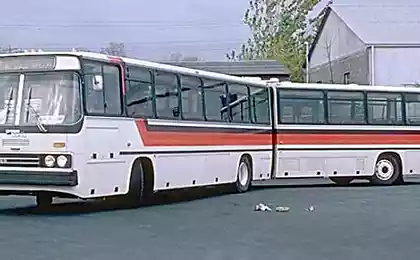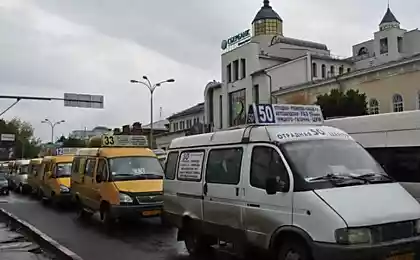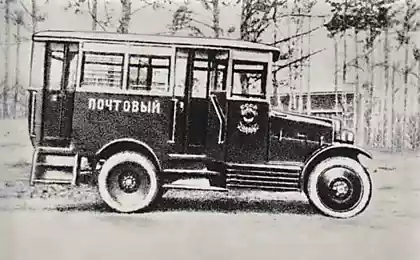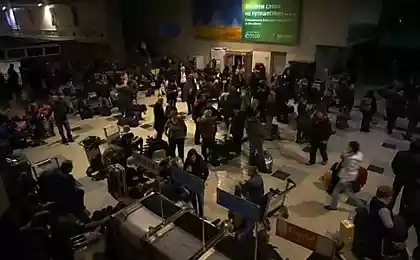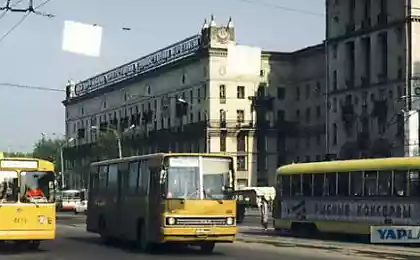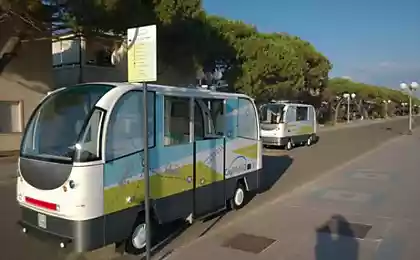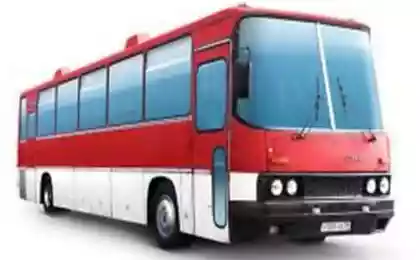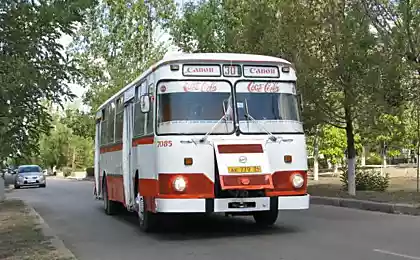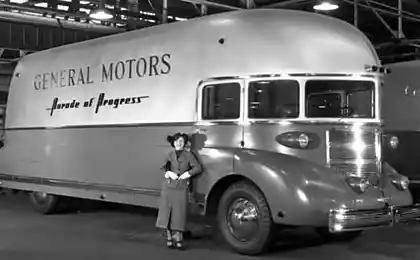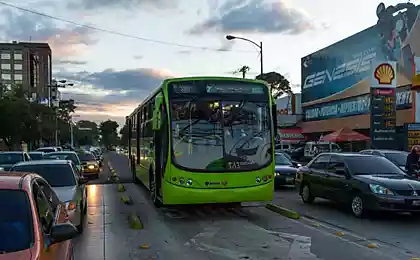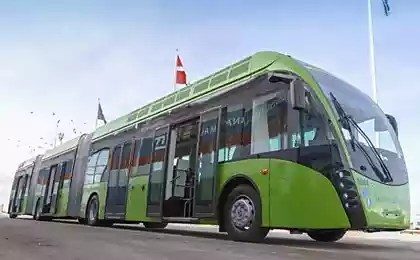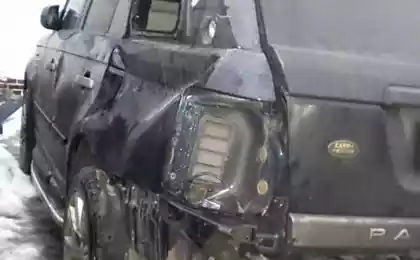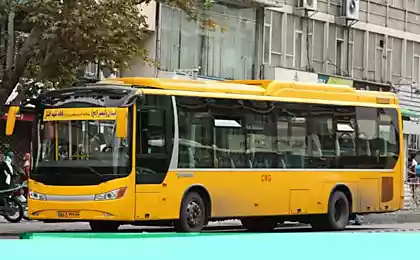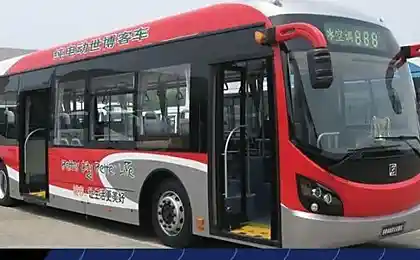2365
Buses IKARUS
Many of us remember the days of the Soviet Union and cruising the city streets with yellow and red and white bus brand Ikarus.
Now that same bus 200 series is almost gone, and the new ones already do not attract attention.
I offer you a selection of rare photographs of buses built on the basis of 200-series, some have not reached either before the Soviet Union, nor to Russia, and some have been released in single copies.
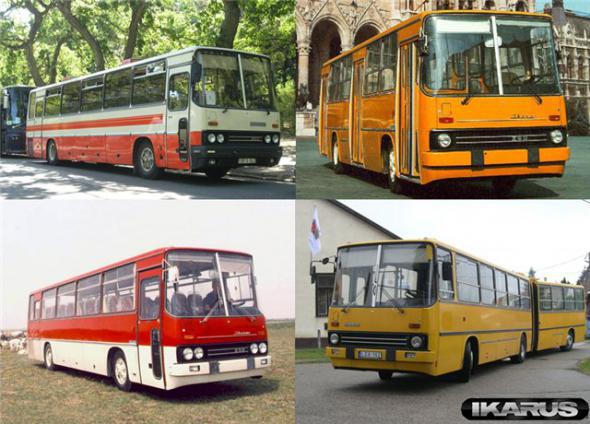
Ikarus 250 Prototype (1967)
The first prototype of intercity bus Ikarus 250 (and actually the entire series) was compiled in 1967. As is the case with the previous models, Ikarus 250 was subjected to the most thorough testing

One of the first instances in 1968 passed operational tests in the USSR, including the participation of leading institutions such as the US and JARI. It is interesting that this bus had rectangular headlamps, while the serial Ikarus 250 will receive four round headlights.

Ikarus 242 (1969-1970)
Low-floor buses Ikarus 242. The first presentation took place at the Trade Fair 1969 in Leipzig, where the bus was awarded a gold medal.
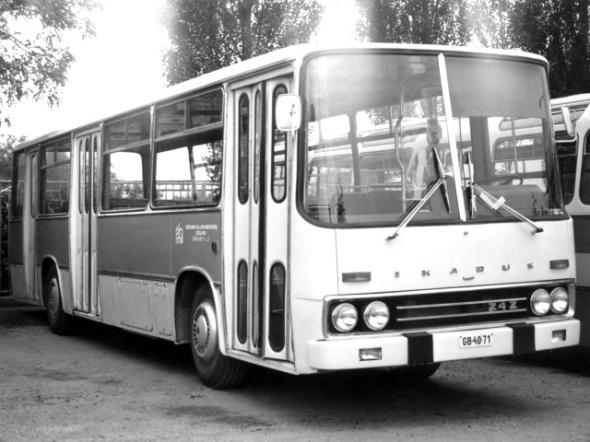
Since it began to develop a special low-floor Ikarus series: 240, 242, 284. In the period from 1969 to 1970 was made a few prototypes, but in a series of model did not go. Some features of the 242 model - an unusual coloring: the first door and "shield" in front painted in a different color. Exist in two variations: urban and suburban, in addition there was a modification of 240, wherein the reduced length of 720 mm.
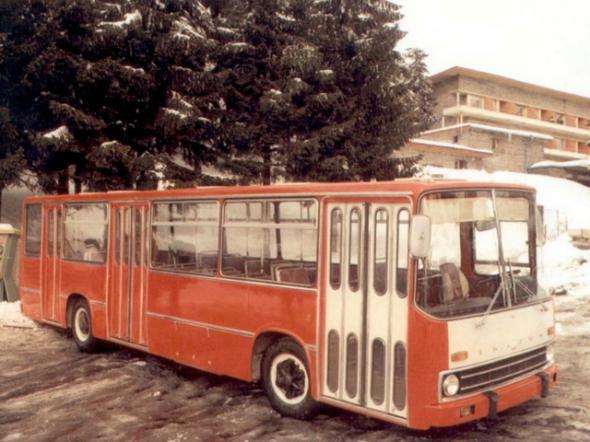
Ikarus-Scania 664 (1972)
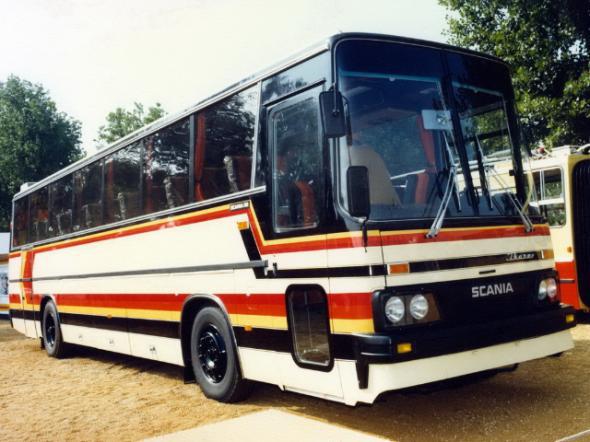
Ikarus 255 Omnibus für Kinder (1972)
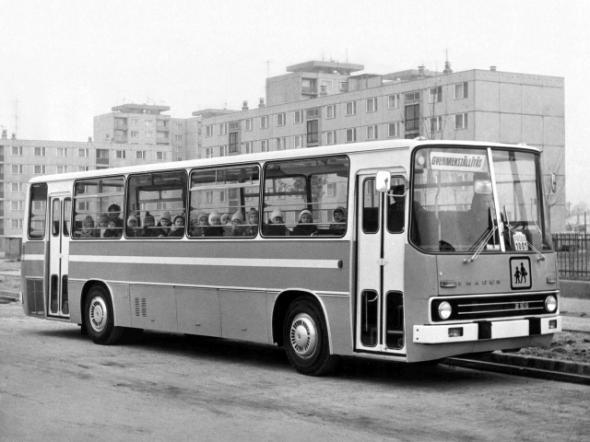
A special version of Ikarus 255.74, designed for the transport of children.
The bus has semiryadnuyu layout seats (104 seats for children and 5 for accompanying adults).
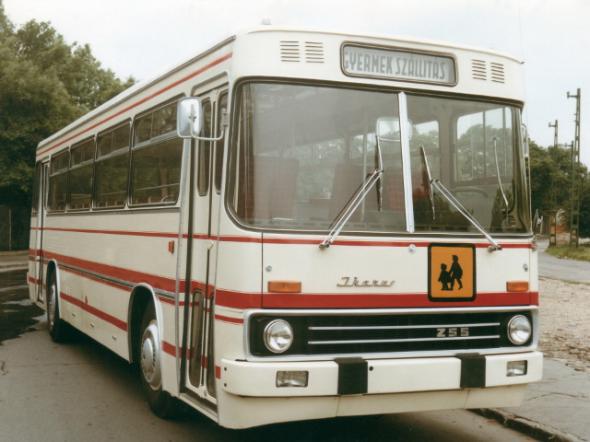
Ikarus 266 (1973)
Ikarus 266 differs from the 260 rear-layout and the presence of two doors. Available in two varieties: suburban and urban (seats 45 and 30, respectively). In November 1974 the Leningrad branch of JARI were launched autumn-winter tests Ikarus 266 on Route 431, Leningrad Gatchina as supply buses of this type are planned in Leningrad. Later this abandoned.
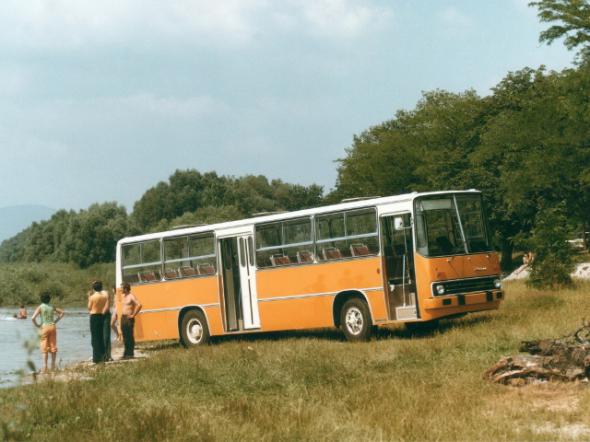
Ikarus 190 (1973-1977)
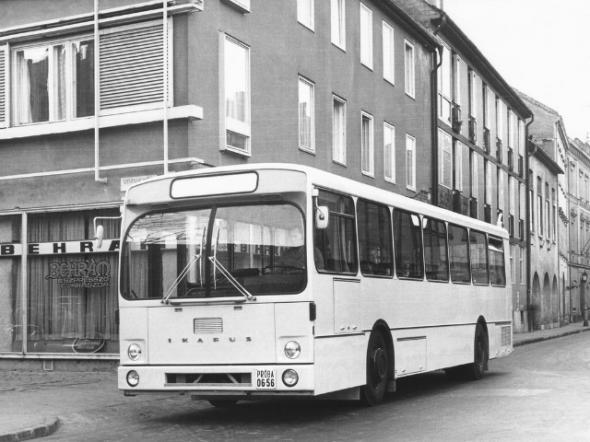
Initially, this bus was developed specifically for Germany, where the Union has made transport companies for manufacturers of buses recommendations on what they need buses (standard VOV). Recommendations concerned including the appearance, which explains the similarity even German cars of different brands. 154 copies were exported to Germany (Hamburg), 100 - in Kuwait, and only 2 have remained in Hungary.
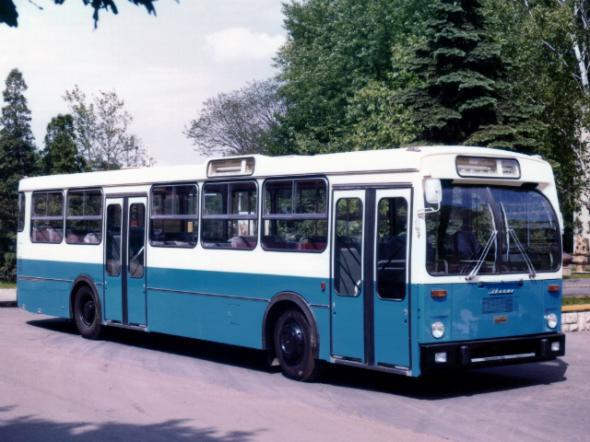
Ikarus 280 Suburban (1973-2000)
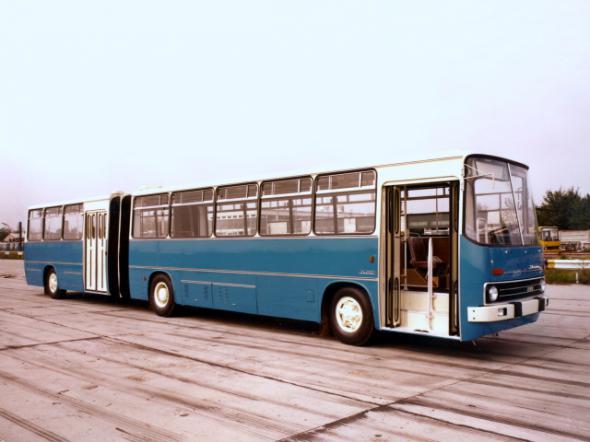
...
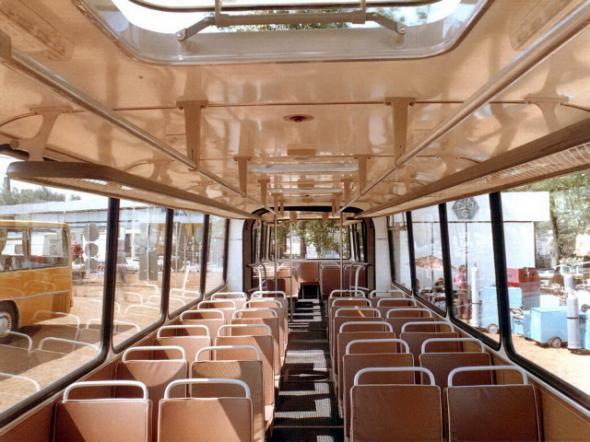
Ikarus 254 (1975)

Ikarus 260 CH (1975)
Created especially for Switzerland. Index «CH» - identification mark of the Swiss vehicles in international traffic.
The special features include: a special "northern" glazing, high-power heaters, Webasto heater with a 24-hour timer, wide doors. Particular attention is paid to security measures, for example, while driving with open doors automatically activates the braking system. Designed for long-distance communication.

Ikarus 270 (1975)
It was first shown in 1975 at the International Autumn Fair in Budapest. It was designed for long-distance communication.
The cabin is located 40 chairs, buffet, refrigerator, vanity, walk-in closet. Comfortable and adjustable seats are equipped with seat belts. The machine weighs 12 m in running order 11, 2 tons, and with a full load - 16 tonnes.
The six-cylinder diesel engine capacity of 220 hp at the rear of the machine under the floor Living Room, allowing the bus to reach speeds of 106 km / h. The stepped shape of the body due to the fact that the floor number is raised more than usual (200 mm above in relation to the driver's compartment) to provide a place for capacious storage compartments. At the same time it managed to significantly improve the safety of passengers, raising them above the area most likely to damage the sidewall of the body in case of accidents. The rear superstructure caused by the need to accommodate the installation of air-conditioning and its air inlet. Among other features of this model, it should be noted independent front suspension, a separate pneumatic actuator brakes, five-speed transmission, hydraulic power steering, safe steering column.
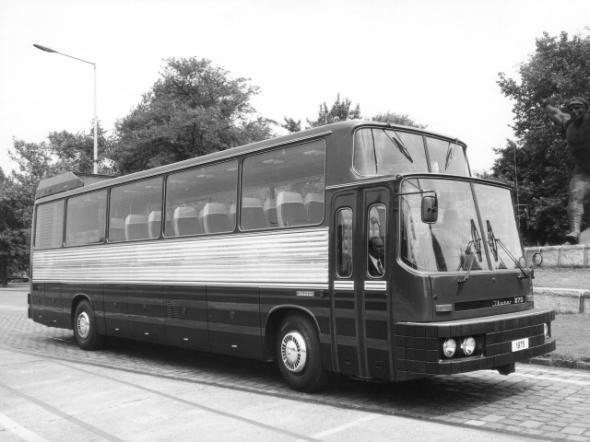
Ikarus 222 (1975-1979)

Ikarus 212 LUX (1976)
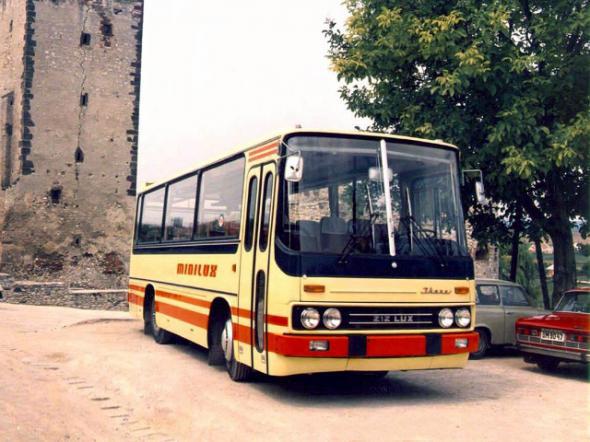
Ikarus-MAN 212 (1976)
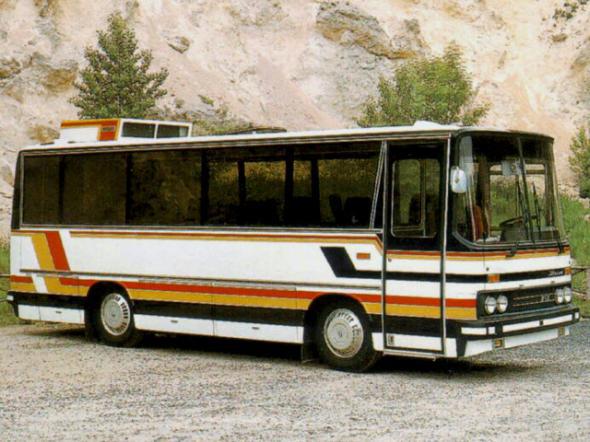
...
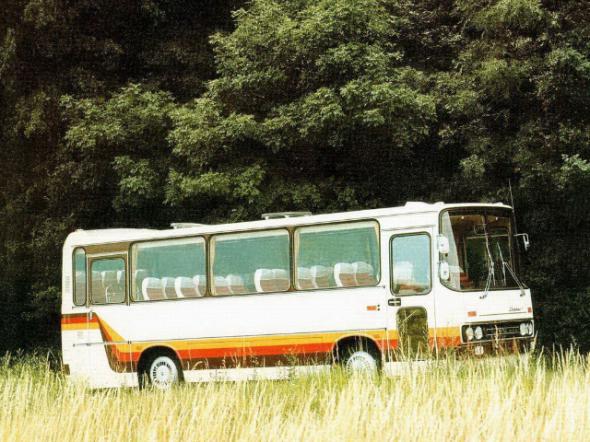
Ikarus-MAN 662 (1976-1977)
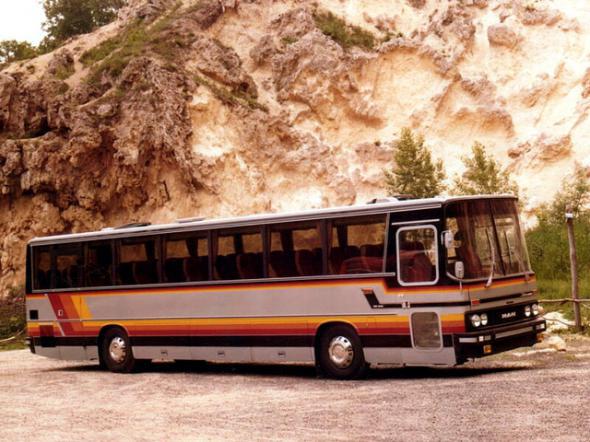
Ikarus-MAN 272 (1978)
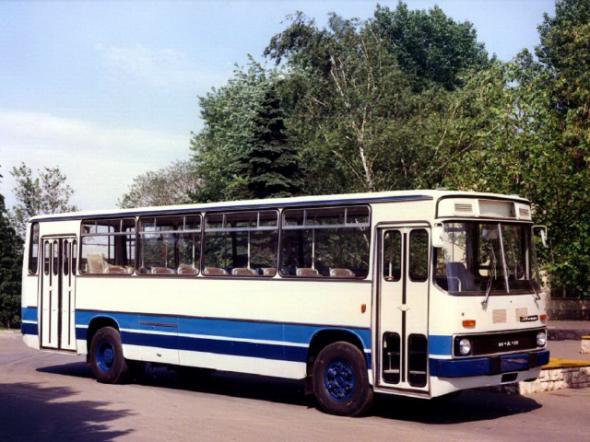
Ikarus 281 (1978)
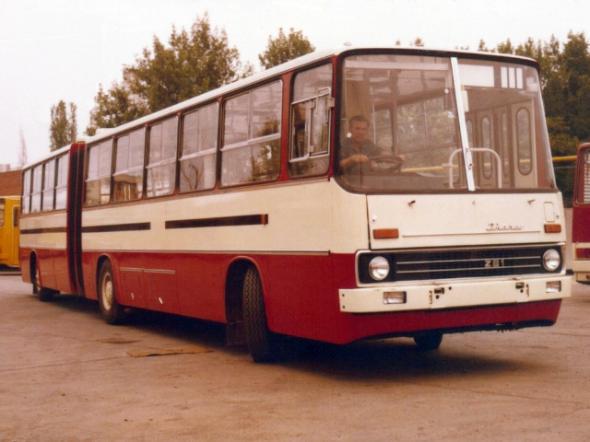
Version 280 city model for left-hand traffic. The white-and-red coloration in 1978-80 was delivered 124 buses to Mozambique.

Ikarus 282 (1978-1980)
It represents an extension of 1, 5 meter model 280. The length of the trailer is increased by one section of the window. From 1978 to 1980, it was built 10 buses.
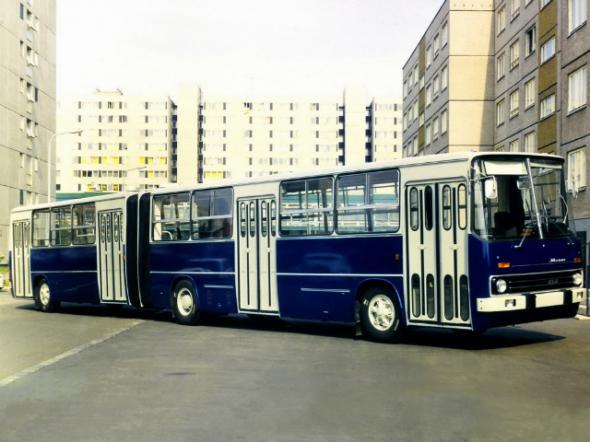
Ikarus 284
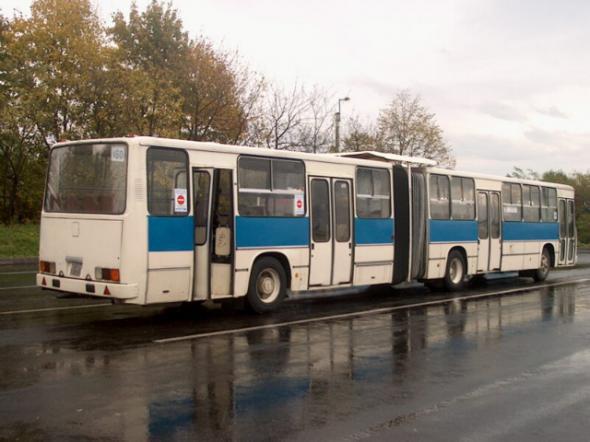
Ikarus 286 Crown (1978-1984)

Version for the US market. Screwdriver assembly was held in Union City, Indiana, in the 1980s. We worked in bus parks of cities such as Portland, Houston, Milwaukee, Louisville, San Mateo, Honolulu, Jacksonville, Albany, Santa Clara.

Ikarus 258 (1983)
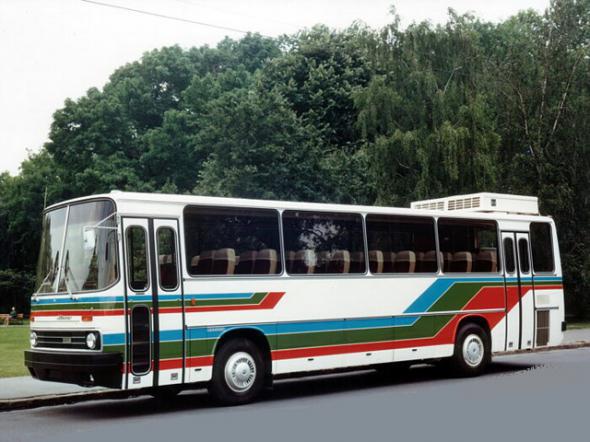
Ikarus 263/283 (1985-1998)
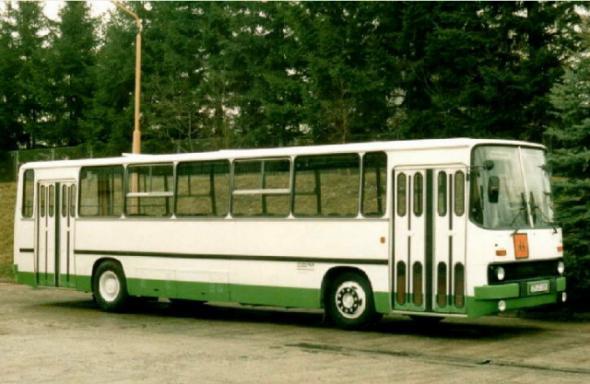
Ikarus 263 and 283, which were issued since the mid-1980s, were a lengthened by 1 m Ikarus 260 and 280. These buses has been developed for export to the GDR, later started production for use in Hungary. Externally differed little extra windows for front and back doors.
The first buses equipped with two chetyrёhstvorchatymi doors. They used the same diesel D2156 HM6U turbocharged 220 hp Increasing the length of the bus allowed to change the layout of the cabin.
Instead harvested seat opposite the middle door there was a large accumulation area. It has been increased, and rear funded playground. Salon has become much more comfortable due to the installation of new seats with a high back and side handles for standing passengers. The seats were located near the doors were separated from them by glass partitions. The room lamp used a new type of fluorescent lamp.
A year later, these innovations have been introduced and Ikarus 260 and 280.
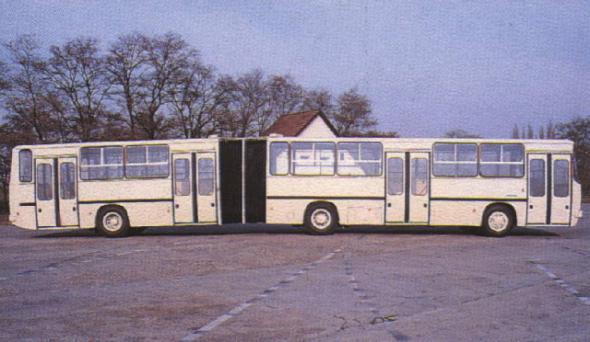
Ikarus 216 (1985-1990)
Shuttle middle class. Export to Kuwait (from 1989 to 1990). It equipped with automatic transmission and air conditioning. The glasses are tinted bus, and the body is made in the traditional livery of Kuwait.
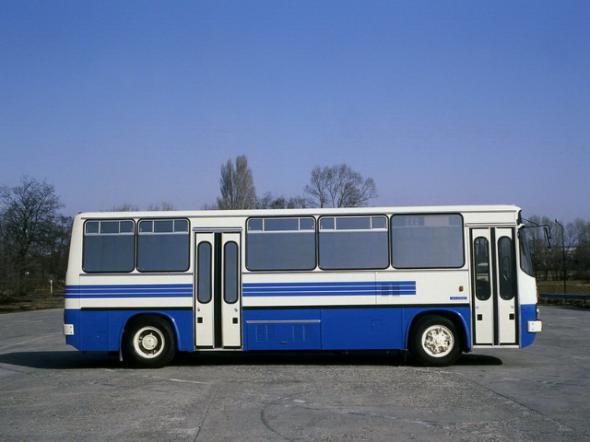
Ikarus 284T (1988)
Built in single copy based on the city bus Ikarus 284 low floor. It was unveiled at a trade fair in Budapest. Equipped with electrical Hungarian company GANZ. Motor power GANZ HXUR / E 56 5G2 B20 is 170 kW, rated voltage - 600V
The engine was placed in the rear of the trailer, with the third axis.
The second and third axis of the tire had a gable, the drive was carried out on the last axle.
There are three trolley inward opening double doors of planetary type, which could be opened and the outside using the key.
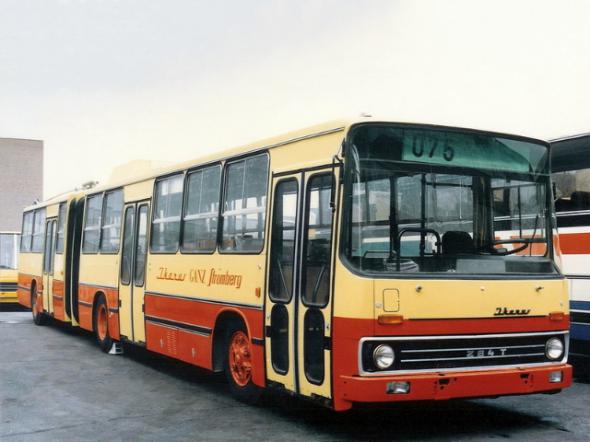
Ikarus 293 (1988)

In 1988 Ikarus bus built on the basis of multiple-bus Ikarus 293, length 22, 5 meters. The prototype has passed all the required tests and visited the exhibition. But the drivers complained of very heavy to transport and handling of passengers, it never came.
The project was shelved until 1992. Then, on the same bus, replace the engine, interior and paint. Then it was sold a few more such buses in Iran.
Also built a licensed copy of the bus under the name Giron Cuba.

Ikarus 290 (1988)

Ikarus 290 for the carriage of passengers at airports.
Engine, D2156 HM6U, moved to the front of the bus, which allowed to organize low-floor passenger compartment.
Release bus was sent for export. One bus sold in the Middle East and Czechoslovakia, 4 - were India and Mozambique.

Ikarus-Steyr 259 (1991)
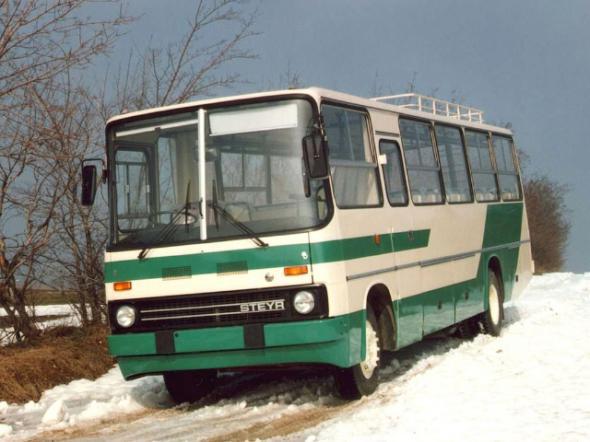
Ikarus-Scania 259

...
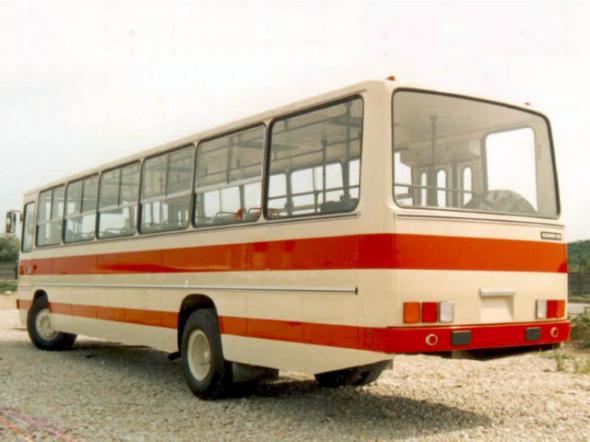
Ikarus 692 PALT
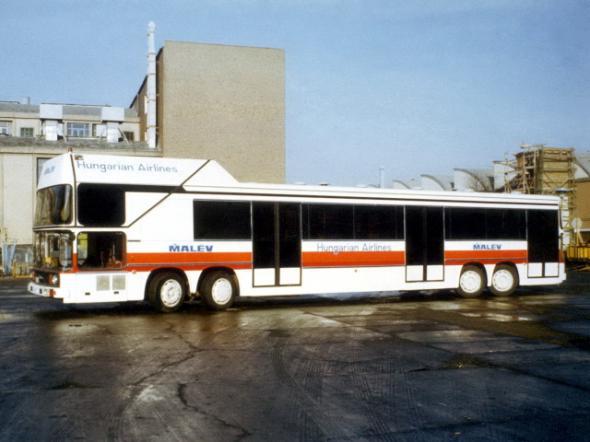
Version airports
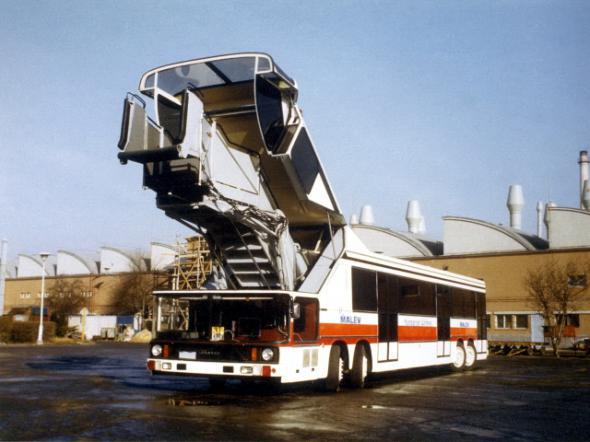
Ikarus 250SL
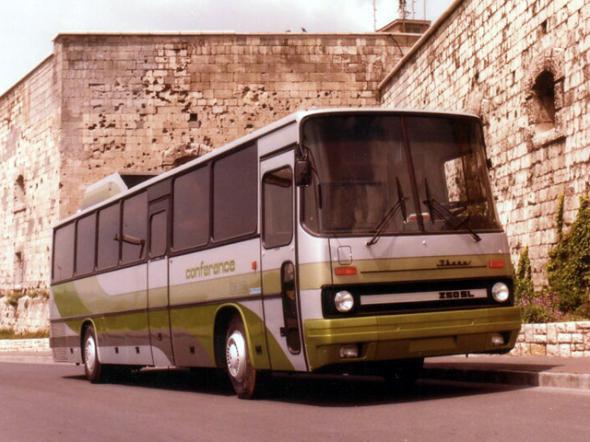
...
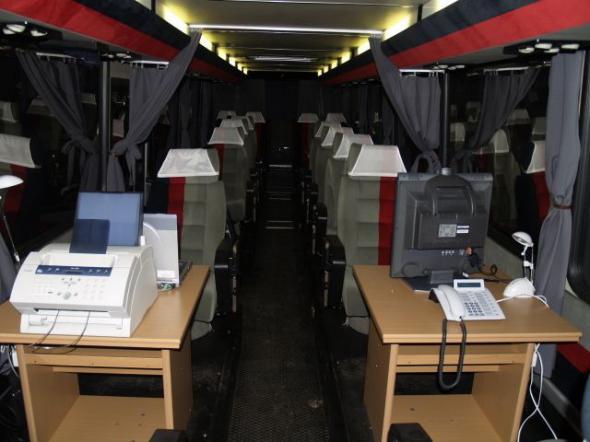
...

...

Ikarus 200
Exotic convertible is based on 250 model. Used for excursions to European cities. Several times modernized.

...
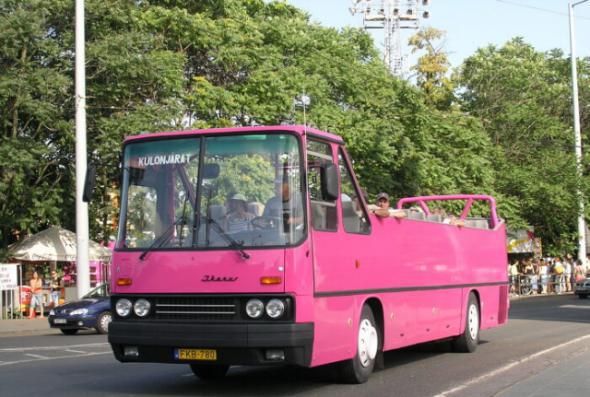
...
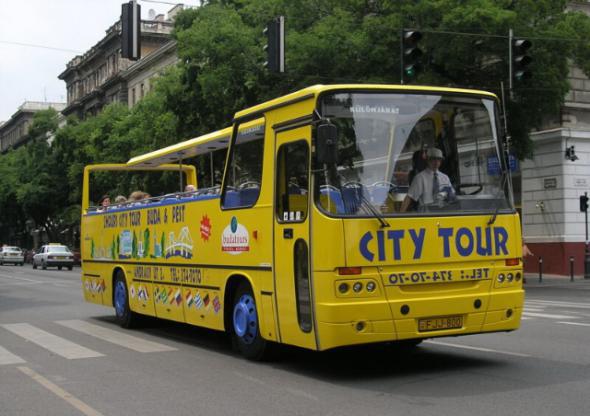
Series «Classic»: C50, C56, C60, C63, C80, C83 (1998-2004)
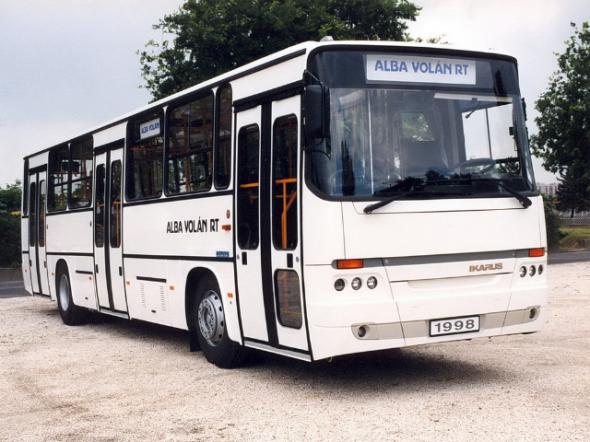
...
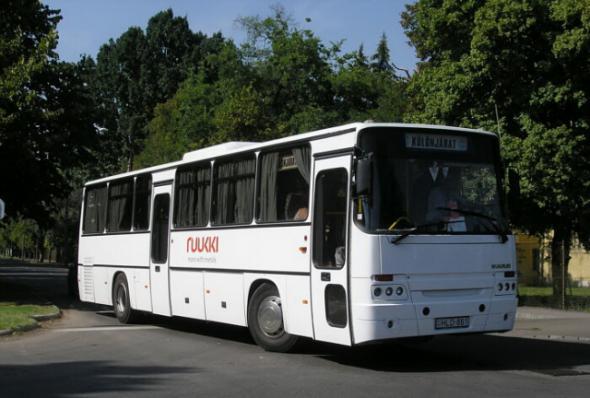
...
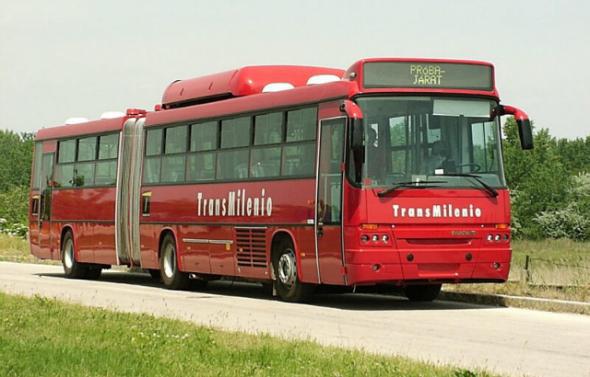
via igo59

Source:
Now that same bus 200 series is almost gone, and the new ones already do not attract attention.
I offer you a selection of rare photographs of buses built on the basis of 200-series, some have not reached either before the Soviet Union, nor to Russia, and some have been released in single copies.

Ikarus 250 Prototype (1967)
The first prototype of intercity bus Ikarus 250 (and actually the entire series) was compiled in 1967. As is the case with the previous models, Ikarus 250 was subjected to the most thorough testing

One of the first instances in 1968 passed operational tests in the USSR, including the participation of leading institutions such as the US and JARI. It is interesting that this bus had rectangular headlamps, while the serial Ikarus 250 will receive four round headlights.

Ikarus 242 (1969-1970)
Low-floor buses Ikarus 242. The first presentation took place at the Trade Fair 1969 in Leipzig, where the bus was awarded a gold medal.

Since it began to develop a special low-floor Ikarus series: 240, 242, 284. In the period from 1969 to 1970 was made a few prototypes, but in a series of model did not go. Some features of the 242 model - an unusual coloring: the first door and "shield" in front painted in a different color. Exist in two variations: urban and suburban, in addition there was a modification of 240, wherein the reduced length of 720 mm.

Ikarus-Scania 664 (1972)

Ikarus 255 Omnibus für Kinder (1972)

A special version of Ikarus 255.74, designed for the transport of children.
The bus has semiryadnuyu layout seats (104 seats for children and 5 for accompanying adults).

Ikarus 266 (1973)
Ikarus 266 differs from the 260 rear-layout and the presence of two doors. Available in two varieties: suburban and urban (seats 45 and 30, respectively). In November 1974 the Leningrad branch of JARI were launched autumn-winter tests Ikarus 266 on Route 431, Leningrad Gatchina as supply buses of this type are planned in Leningrad. Later this abandoned.

Ikarus 190 (1973-1977)

Initially, this bus was developed specifically for Germany, where the Union has made transport companies for manufacturers of buses recommendations on what they need buses (standard VOV). Recommendations concerned including the appearance, which explains the similarity even German cars of different brands. 154 copies were exported to Germany (Hamburg), 100 - in Kuwait, and only 2 have remained in Hungary.

Ikarus 280 Suburban (1973-2000)

...

Ikarus 254 (1975)

Ikarus 260 CH (1975)
Created especially for Switzerland. Index «CH» - identification mark of the Swiss vehicles in international traffic.
The special features include: a special "northern" glazing, high-power heaters, Webasto heater with a 24-hour timer, wide doors. Particular attention is paid to security measures, for example, while driving with open doors automatically activates the braking system. Designed for long-distance communication.

Ikarus 270 (1975)
It was first shown in 1975 at the International Autumn Fair in Budapest. It was designed for long-distance communication.
The cabin is located 40 chairs, buffet, refrigerator, vanity, walk-in closet. Comfortable and adjustable seats are equipped with seat belts. The machine weighs 12 m in running order 11, 2 tons, and with a full load - 16 tonnes.
The six-cylinder diesel engine capacity of 220 hp at the rear of the machine under the floor Living Room, allowing the bus to reach speeds of 106 km / h. The stepped shape of the body due to the fact that the floor number is raised more than usual (200 mm above in relation to the driver's compartment) to provide a place for capacious storage compartments. At the same time it managed to significantly improve the safety of passengers, raising them above the area most likely to damage the sidewall of the body in case of accidents. The rear superstructure caused by the need to accommodate the installation of air-conditioning and its air inlet. Among other features of this model, it should be noted independent front suspension, a separate pneumatic actuator brakes, five-speed transmission, hydraulic power steering, safe steering column.

Ikarus 222 (1975-1979)

Ikarus 212 LUX (1976)

Ikarus-MAN 212 (1976)

...

Ikarus-MAN 662 (1976-1977)

Ikarus-MAN 272 (1978)

Ikarus 281 (1978)

Version 280 city model for left-hand traffic. The white-and-red coloration in 1978-80 was delivered 124 buses to Mozambique.

Ikarus 282 (1978-1980)
It represents an extension of 1, 5 meter model 280. The length of the trailer is increased by one section of the window. From 1978 to 1980, it was built 10 buses.

Ikarus 284

Ikarus 286 Crown (1978-1984)

Version for the US market. Screwdriver assembly was held in Union City, Indiana, in the 1980s. We worked in bus parks of cities such as Portland, Houston, Milwaukee, Louisville, San Mateo, Honolulu, Jacksonville, Albany, Santa Clara.

Ikarus 258 (1983)

Ikarus 263/283 (1985-1998)

Ikarus 263 and 283, which were issued since the mid-1980s, were a lengthened by 1 m Ikarus 260 and 280. These buses has been developed for export to the GDR, later started production for use in Hungary. Externally differed little extra windows for front and back doors.
The first buses equipped with two chetyrёhstvorchatymi doors. They used the same diesel D2156 HM6U turbocharged 220 hp Increasing the length of the bus allowed to change the layout of the cabin.
Instead harvested seat opposite the middle door there was a large accumulation area. It has been increased, and rear funded playground. Salon has become much more comfortable due to the installation of new seats with a high back and side handles for standing passengers. The seats were located near the doors were separated from them by glass partitions. The room lamp used a new type of fluorescent lamp.
A year later, these innovations have been introduced and Ikarus 260 and 280.

Ikarus 216 (1985-1990)
Shuttle middle class. Export to Kuwait (from 1989 to 1990). It equipped with automatic transmission and air conditioning. The glasses are tinted bus, and the body is made in the traditional livery of Kuwait.

Ikarus 284T (1988)
Built in single copy based on the city bus Ikarus 284 low floor. It was unveiled at a trade fair in Budapest. Equipped with electrical Hungarian company GANZ. Motor power GANZ HXUR / E 56 5G2 B20 is 170 kW, rated voltage - 600V
The engine was placed in the rear of the trailer, with the third axis.
The second and third axis of the tire had a gable, the drive was carried out on the last axle.
There are three trolley inward opening double doors of planetary type, which could be opened and the outside using the key.

Ikarus 293 (1988)

In 1988 Ikarus bus built on the basis of multiple-bus Ikarus 293, length 22, 5 meters. The prototype has passed all the required tests and visited the exhibition. But the drivers complained of very heavy to transport and handling of passengers, it never came.
The project was shelved until 1992. Then, on the same bus, replace the engine, interior and paint. Then it was sold a few more such buses in Iran.
Also built a licensed copy of the bus under the name Giron Cuba.

Ikarus 290 (1988)

Ikarus 290 for the carriage of passengers at airports.
Engine, D2156 HM6U, moved to the front of the bus, which allowed to organize low-floor passenger compartment.
Release bus was sent for export. One bus sold in the Middle East and Czechoslovakia, 4 - were India and Mozambique.

Ikarus-Steyr 259 (1991)

Ikarus-Scania 259

...

Ikarus 692 PALT

Version airports

Ikarus 250SL

...

...

...

Ikarus 200
Exotic convertible is based on 250 model. Used for excursions to European cities. Several times modernized.

...

...

Series «Classic»: C50, C56, C60, C63, C80, C83 (1998-2004)

...

...

via igo59

Source:
